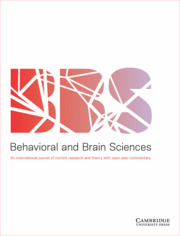Crossref Citations
This article has been cited by the following publications. This list is generated based on data provided by Crossref.
Hames, Raymond
and
McCabe, Carl
2007.
Meal sharing among the Ye’kwana.
Human Nature,
Vol. 18,
Issue. 1,
p.
1.
Sills, Jennifer
Henrich, Joseph
Ensminger, Jean
McElreath, Richard
Barr, Abigail
Barrett, Clark
Bolyanatz, Alexander
Cardenas, Juan Camilo
Gurven, Michael
Gwako, Edwins
Henrich, Natalie
Lesorogol, Carolyn
Marlowe, Frank
Tracer, David
and
Ziker, John
2010.
Response—Evolution of Fairness.
Science,
Vol. 329,
Issue. 5990,
p.
389.
Burum, Bethany
Nowak, Martin A.
and
Hoffman, Moshe
2020.
An evolutionary explanation for ineffective altruism.
Nature Human Behaviour,
Vol. 4,
Issue. 12,
p.
1245.
Staes, Nicky
Vermeulen, Kim
van Leeuwen, Edwin J. C.
Verspeek, Jonas
Torfs, Jonas R. R.
Eens, Marcel
and
Stevens, Jeroen M. G.
2022.
Drivers of Dyadic Cofeeding Tolerance in Pan: A Composite Measure Approach.
Biology,
Vol. 11,
Issue. 5,
p.
713.
Garfield, Zachary H.
2025.
Legacy and constraint in the evolution of human culture.
Evolution and Human Behavior,
Vol. 46,
Issue. 5,
p.
106714.

